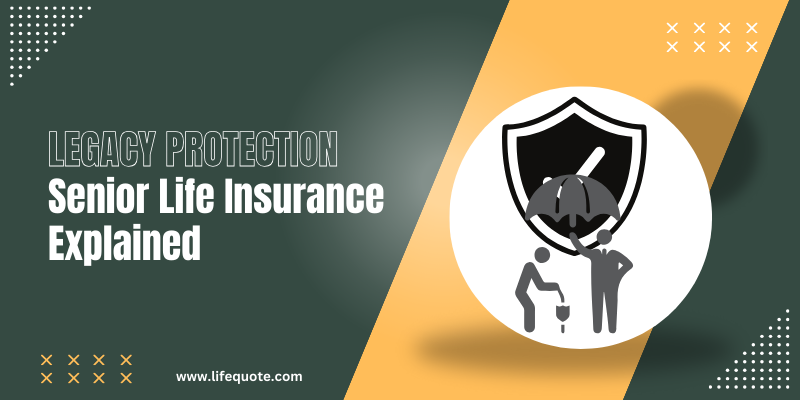- Speak to a licensed sales agent!
- (800) 521-7873
Looking to Start Investing Your Money? Start With Life Insurance!

Investment is an extremely effective way of achieving financial goals and preparing for unforeseen future circumstances. In the United States, there are various investment tools for people of all ages, backgrounds, and income levels. Regardless of an individual’s profession and financial capabilities, there are always investment strategies that can fit into each person’s budget. If you have been considering investing your money in an asset that has both long-term and immediate benefits while also safeguarding your dependents’ future, life insurance is your best bet.
Various Investment Plans
For many American breadwinners, managing a budget to meet everyday needs and is already a daunting financial task, not to mention potential debt you may be paying down. While obligations and debts can’t be ignored, you will need to make room in your budget for long- and short-term investment options if you want to eventually obtain financial freedom and independence.
Some of these investment options may include real estate, mutual funds, bonds, stocks, venture capitalism, and life insurance. Of all these options, life insurance stands out as the financial plan that combines both investment benefits and risk management features for both immediate and future needs. So it’s not surprising to see that about 60% of Americans own life insurance, according to the Insurance Information Institute (III).
Why You Should Invest In Life Insurance
Since its inception in 1759 by the Presbyterian Ministers Fund, life insurance has metamorphosed from final expenses and death benefit plans to now include a wide range of living and death benefits. Its numerous benefits can be accessed shortly after the policy is purchased and can go on to outlive the policyholder.
It doesn’t matter if you are single and looking to safeguard your personal future financially or a breadwinner interested in meeting your family’s present and future needs, investing in life insurance will, among other things, afford you the following advantages:
- It offers financial security and assurance
- It is a great tool for debt management
- It can be leveraged for business opportunities
- It has numerous tax benefits that can’t be found in many other investment options
- It can be the perfect retirement plan
- It combines both savings and investment
- Primarily, it has death benefits for your dependents
Life Insurance Policies With Investment Plans
While there are two major types of life insurance, term life insurance and permanent life insurance, each of them has various products structured to serve different financial purposes, depending on an individual’s needs.
Term life insurance, as the name implies, is designed to cover you for a certain number of years with an option to renew many policies to after they expire. Permanent life insurance, on the other hand, is a lifetime plan that is structured to outlive the policyholder. Both term and permanent life insurance have lump-sum death benefits payable to the beneficiaries of a policyholder after his or her passing.
However, beyond the basic living and death benefit coverage, there is a subcategory of permanent life insurance known as universal life that provides investment and savings plans.
Best Life Insurance Products to Invest In: Universal Life Insurance
Universal life insurance, in its most basic form, offers an investment savings plan and relatively low premiums. It can be considered a hybrid of both term life and permanent life insurance because it allows you to build cash value while at the same time enjoying life insurance coverage.
You have the freedom and flexibility to choose what to do with the savings and the investment aspects of your policy as it builds up cash value over time. This cash value is a living benefit that can be leveraged for any financial needs. You can withdraw the tax-deferred cash value to buy a house, start a business, pay for college tuition, and more.
This Is How It Works
As a universal life insurance policyholder, when you pay your monthly premium, the payment is divided into two portions. One portion goes into your policy while the other goes into your investment savings plan. Over time, that investment grows and starts yielding increased gains. Once the value of the investment portion of the plan reaches a certain level, it becomes enough to help cover your premium payments.
Under universal life insurance, there are two popular products: variable universal life and indexed universal life. These two have many similarities, just as each has certain elements that differentiate it from the other. The difference is mainly in the subaccounts each is invested in.
Variable Universal Life Insurance
You have the option of choosing from subaccounts which are similar to mutual funds in which to invest your variable universal life cash value. You may have more than 20 investment options, which may include a market index, a portfolio of equities, money market funds, and bonds. You have a significant amount of control over your investment, which gives you higher potential gains than other investment life insurance policies.
Indexed Universal Life Insurance
The cash value of your indexed life insurance is often tied to a stock market index such as the S&P 500, Nasdaq. Your investment gains will depend on the performance of the index your account is tied to. It has a feature called rates and caps, which stipulates the maximum gains you can receive. It also has a “floor” which guarantees you a minimum return rate in case your index falls. In other words, you get to benefit from the upside of the index and also to a large degree protected from risk if the market plummets.
How LifeQuote Can Help
Investing your money wisely just requires that you assess your short, and long-term goals. Getting started with a solid life insurance policy is a great way to set money aside for your loved ones. Choosing the right type of permanent life insurance coverage allows you to use some of that money while you’re alive, as well as allocate it for your beneficiaries someday.
LifeQuote’s team of highly-experienced agents can help you choose the plan that’s right for your needs and let you compare rates from top-rated companies. To get started today, contact us to speak with an agent or get a instant quote from our free online generator.




